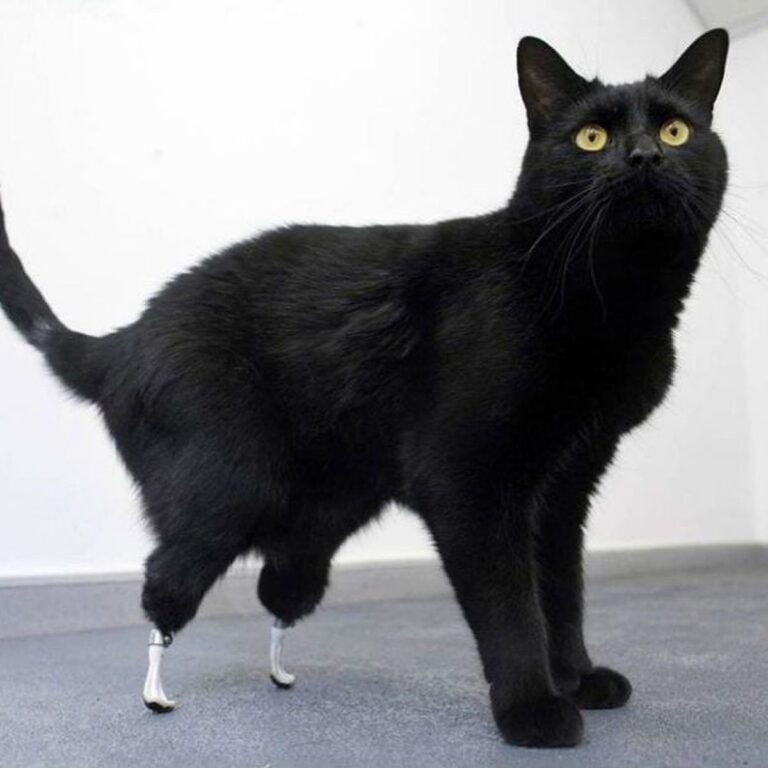From internal procedures like knee or hip joint replacements, to external ones like replacement limbs, prosthetics allow hundreds of thousands of people each year increased quality of life and mobility. As someone with a background in animal ecology, I became interested in how prosthetics for animals might be created; they have very different morphology and requirements to humans, with stronger forces being exerted on them, and the animal’s natural behaviour needs to be considered.
One example of prosthetics being used for non-human patients is, of course, Prof. Noel Fitzpatrick, who treats pets around the UK, for example Oscar, a cat who lost his hind limbs, and had them replaced with Intraosseous Transcutaneous Amputation Prosthetics (ITAP), where holes are drilled into the residual limb’s bone and the implants are then attached, allowing the skin to bond to the prosthetic, creating ‘pegs’ onto which the limb itself can then be attached following a recovery period. Similar methods for bone-anchored limb prosthetics are being considered for humans, though still in its early stages. Even a recent study performed on 16 cats and 4 pigs finds issues with infection at the stoma, and a high failure rate of integration. Regardless, it is true that prosthetic techniques being developed in the field of veterinary science can have implications for human medicine.

But what I was most interested in was wild animals, whose requirements would be a lot different to pets’. That’s how I ran into Winter, a bottlenose dolphin whose tail was lost in a crab trap in 2005. Over a year and a half later, with a lot of work from a dedicated team, a prosthetic tail was completed and fitted onto Winter. Unlike an arm or a leg, a tail can’t simply stay solid as the animal moves, but must move along with it, hold its position under water and under the force of a large animal using it to propel its movement, not cause further injuries to Winter, and, of course, perform its function as a tail. The resulting material created from this research, WintersGel, can now be used for human patients, especially athletes as it is softer and distributes weight more evenly than other liners, reducing pain and pressure exerted by the limb.
There are many other cases of prosthetics being used in wildlife, from an injured Bald Eagle with a prosthetic beak, to a young elephant with a prosthetic foot, to a 3D-printed leg for a Secretary Bird at a bird park who injured her leg, and, prevented from engaging in her natural behaviours, began engaging in behaviour associated with poor welfare. There has even been a tiger in east Germany who, experiencing pain from arthritis, had a hip replacement, although a more recent operation hasn’t been as successful, and the tiger who underwent it had complications. This, as well as other cases where operation may have had more negative than positive consequences for the animal, raise the importance of ethical considerations in wildlife prostheses. Are these operations always necessary? Do they increase the animal’s quality of life, or do they add unnecessary stress to an animal’s life who might not survive for very much longer, or who, unable to engage in their full behavioural repertoire, might exhibit stereotypies or other negative behaviours? With humans, we can operate on the basis that each of us should have autonomy over what happens to our own bodies, and that informed consent is crucial in these and other procedures, but who should get to decide when the patient can neither understand what is happening nor communicate their preferences on the matter?
This is a good, nicely presented, original and thoughtful blog article. It is engagingly reflective and explores a good number of sources to illustrate your point.
To improve, you may wish to analyse in a bit more detail your sources, and say something about how accurate/reliable they are. Has a scientific approach been taken? In addition, for ITAP, what is the evidence looking like in humans that this may work – I was left wondering why the research was in its early stages and what the data looked like. Also, you may wish to use some of your own multimedia.